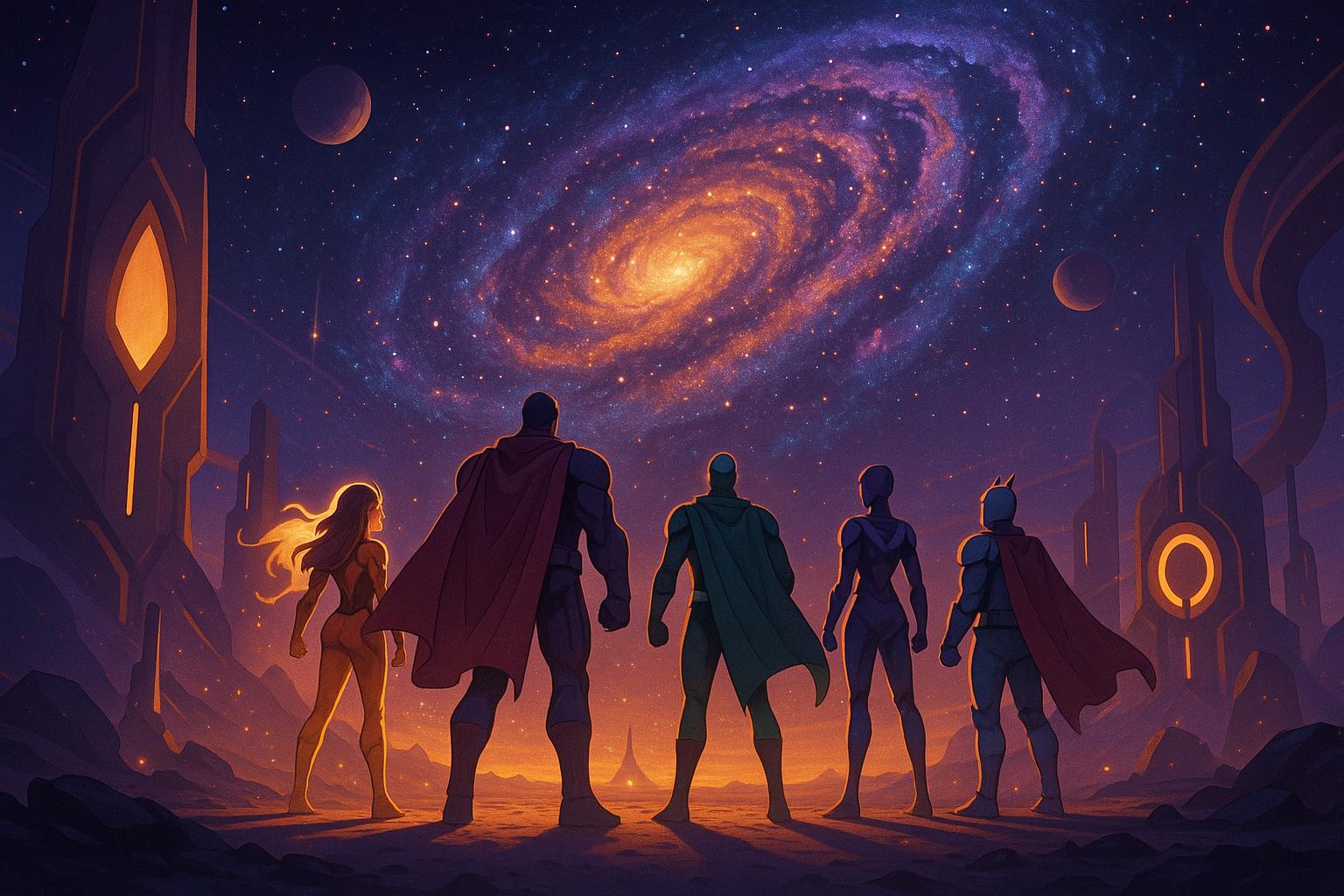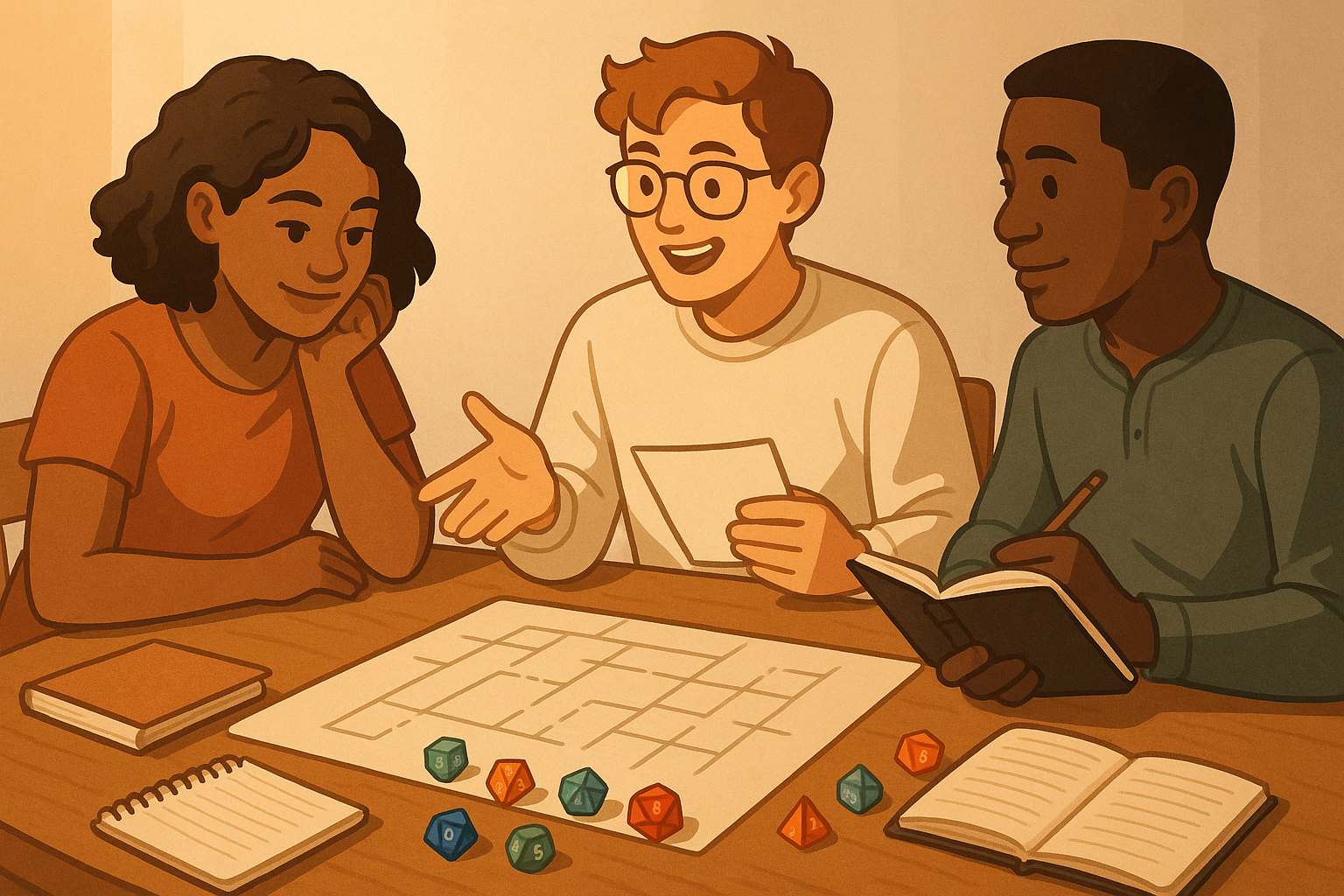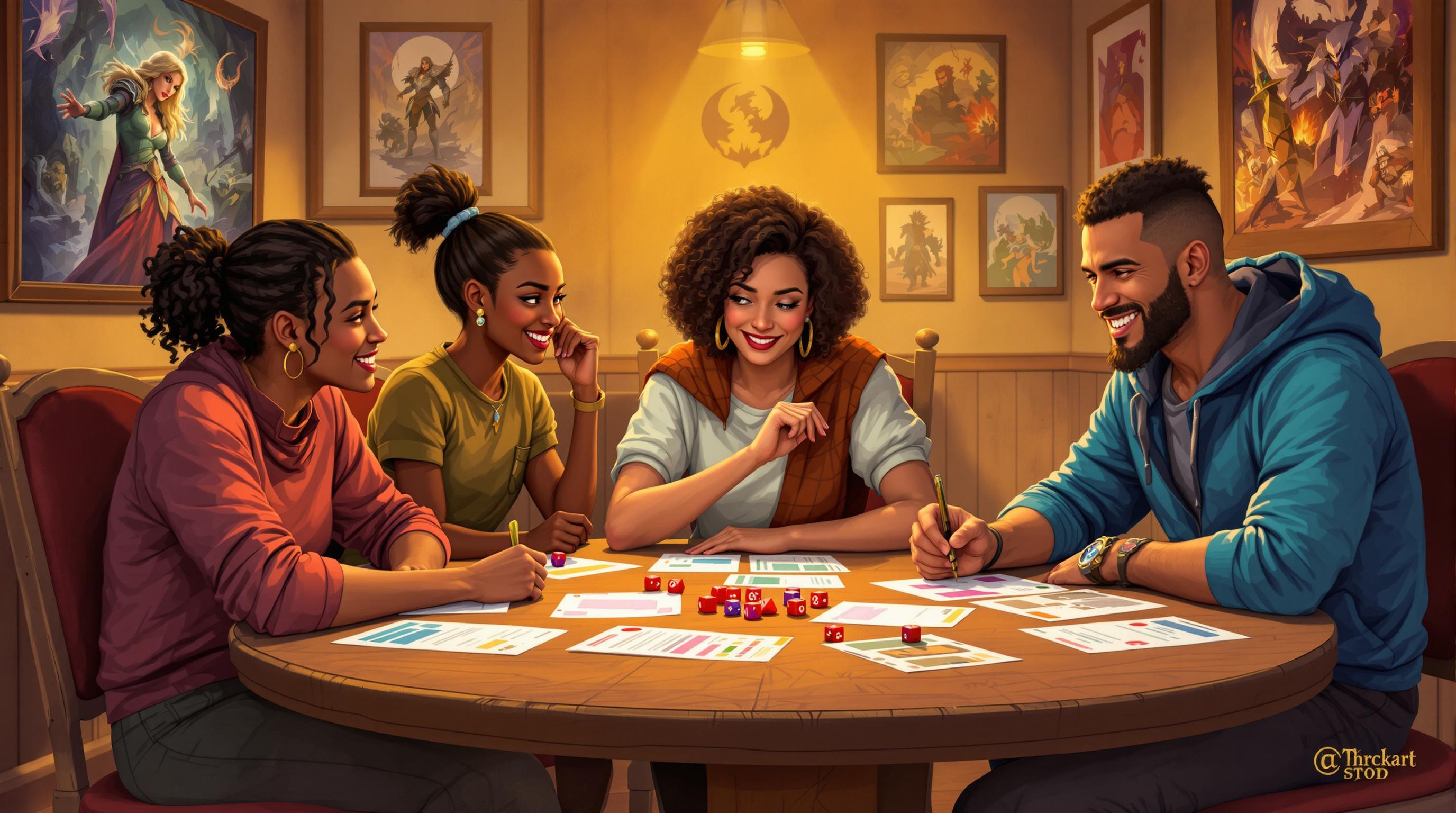In the intricate world of tabletop role-playing games (TTRPGs), every roll of the dice, shuffle of cards, or tower of blocks holds immense significance. Resolution mechanics - those systems that decide whether your rogue cracks the lock or your bard sways the Duke - are not just functional rules. They shape the very texture of your gaming experience. Whether you're a game designer crafting the next cult classic or a Game Master (GM) looking to enhance your sessions, understanding resolution mechanics is the key to creating memorable, impactful play. Let's dive into this essential component of TTRPG design and uncover how to wield these mechanics with intentionality.
What Are Resolution Mechanics?
At their core, resolution mechanics are the systems that turn uncertain narrative moments into definitive outcomes. They answer questions like, "Do you leap the chasm?" or "Does the spell succeed?" Yet, their impact goes far deeper. These mechanics influence pacing, player immersion, storytelling dynamics, and even the emotional tone of the game. Dr. Ben from RPG PhD describes this beautifully: "Change the resolution rules, and you change the vibe of play."
Why Do Resolution Mechanics Matter?
Resolution mechanics are, in essence, design statements. They determine not just what happens in a game, but how it happens. They convey a game’s priorities - whether it values dramatic storytelling, probabilistic realism, or tactical problem-solving. For players, these systems shape the experience they have at the table: the tension of rolling dice, the satisfaction of pulling off a critical success, or the dread of seeing a tower collapse.
Theoretical Foundations: Tools for Analysis
To understand resolution mechanics, it’s helpful to explore a few key game design theories:
- MDA Framework (Mechanics, Dynamics, Aesthetics): This theory explains how rules (mechanics) generate table behaviors (dynamics), which in turn create emotional responses (aesthetics). For example, a swingy d20 system generates excitement and drama, while a predictable 3d6 bell curve fosters realism and competence.
- GNS Theory (Gamism, Narrativism, Simulationism): This model categorizes games based on their primary focus - challenge, narrative, or realism. For example, "Call of Cthulhu" leans simulationist, prioritizing realism through its percentile mechanics, while "Apocalypse World" leans narrativist, focusing on story-driven stakes.
- Fortune Timing: This theory explores when the dice are rolled. Systems like "fortune in the middle" (e.g., Apocalypse World) place dice rolls before outcomes are narrated, forcing the story to adapt to the results. In contrast, "fortune at the end" systems (e.g., D&D) roll after narrative intent is declared, confirming or denying players’ declared actions.
- DDE Model (Dynamism, Decisions, Discovery, Expression): This framework examines how resolution mechanics influence player actions. Does the system prioritize tactical choices, emergent narratives, or player creativity?
Each of these lenses provides valuable insight into how resolution mechanics influence gameplay and emotional tone.
Common Resolution Mechanic Types and Their Impact
Resolution mechanics come in diverse forms, each with its own strengths, weaknesses, and applications. Below are some of the most common families of mechanics and how they shape the gaming experience.
1. Flat Single Die Rolls (e.g., D20 Systems)
How It Works: Players roll a single die (typically a d20), add modifiers, and attempt to meet or beat a target number (DC).
Pros:
- Simplicity: Easy for new players to learn.
- Dramatic Variance: Encourages bold, cinematic moments where underdogs can triumph or experts can fail.
- Transparency: Players can quickly gauge their odds by comparing bonuses to DCs.
Cons:
- Swingy Outcomes: Success and failure are highly luck-dependent, which can undermine realism.
- All-Or-Nothing Results: Without house rules, rolls are binary - either success or failure.
- Competence Gap: Even skilled characters fail frequently, which can feel unsatisfying in serious or simulationist settings.
Design Use: Flat dice are perfect for games that emphasize high adventure, bold risks, and cinematic drama - such as Dungeons & Dragons.
2. Bell Curve Rolls (e.g., 3D6 GURPS)
How It Works: Multiple dice (e.g., 3d6) are rolled, producing a bell curve where middle results are more common.
Pros:
- Predictable Competence: Skilled characters succeed more consistently, supporting immersion and realism.
- Granularity: Even small modifiers significantly impact outcomes, making character build choices feel meaningful.
Cons:
- Less Cinematic: Critical successes and failures are rare, which may reduce excitement.
- Math Complexity: Probability calculations may intimidate some players.
Design Use: Ideal for simulation-heavy games or genres where realism and fragility - such as horror - are central themes.
3. Dice Pools (e.g., Blades in the Dark, Shadowrun)
How It Works: Players roll multiple dice based on skills or attributes. Success is determined by counting "hits" or taking the highest die result.
Pros:
- Tactile Fun: Rolling a fistful of dice is viscerally satisfying.
- Degree of Success: Pools naturally measure success quality (e.g., the number of hits).
- Collaborative Play: Systems often encourage teamwork by letting characters contribute dice to a shared pool.
Cons:
- Clutter and Complexity: Large pools can slow play.
- Fuzzy Math: Odds can be difficult for players to intuit.
Design Use: Best suited for heists, teamwork-heavy games, and high-stakes drama that thrives on escalating risks.
4. Banded Outcomes (e.g., 2D6 Powered by the Apocalypse)
How It Works: Players roll 2d6, add a stat, and resolve outcomes within three bands: full success (10+), partial success (7–9), or failure (6 or less).
Pros:
- Fail Forward: Even failures drive the story forward, avoiding narrative stalls.
- Snowballing Drama: Partial successes create complications that fuel future events.
- Player Agency: Moves are tied directly to in-character actions, strengthening immersion.
Cons:
- Limited Tactical Depth: These systems prioritize narrative over crunchy mechanics.
- GM Dependence: GMs must improvise consequences frequently.
Design Use: Perfect for narrative-driven campaigns where messy human drama and complex relationships take center stage.
5. Physical Tension Mechanics (e.g., Jenga in Dread)
How It Works: Resolution systems replace dice with physical tension tasks, like pulling Jenga blocks in the horror RPG "Dread."
Pros:
- Embodied Tension: Players physically feel the suspense, mirroring their characters’ experiences.
- Atmospheric: Perfectly suited for horror or suspense genres.
Cons:
- Limited Longevity: These mechanics are generally better for one-shots than long campaigns.
- Accessibility: Physical challenges may exclude some players.
Design Use: Excellent for horror one-shots where the mechanics amplify the atmosphere of dread.
Matching Mechanics to Purpose: The Designer’s Checklist
When designing or selecting resolution mechanics, ask yourself:
- What emotion do I want players to feel? Heroic, helpless, suspenseful, or dramatic?
- How does the mechanic generate that feeling? Swingy dice for drama? Bell curves for realism? Physical props for embodied tension?
- What are the trade-offs? For example, flat dice are exciting but undermine competence, while bell curves are realistic but lack cinematic flair.
Aligning mechanics with your intended emotional tone ensures that every roll of the dice reinforces your game’s core experience.
Key Takeaways
- Resolution mechanics shape more than outcomes: They influence pacing, spotlight time, player behavior, and emotional tone.
- Theories like MDA and GNS provide useful lenses: Use these frameworks to analyze and align your system with your game’s goals.
- Different mechanics suit different genres: Swingy dice work great for bold adventures, while bell curves are better for horror and realism.
- Design intentionally: Every choice - from dice type to consequence visibility - impacts the tone of play. Align mechanics with your narrative and emotional goals.
- Avoid common pitfalls: Fix binary "fail stalls", over-swingy dice, and opaque stakes by incorporating partial successes, bell curves, or visible progress mechanics.
Conclusion
Resolution mechanics are far more than just "the dice bit" of a game - they are the engine driving your TTRPG’s emotional and narrative core. By understanding the theories behind them and choosing mechanics intentionally, you can craft systems that resonate deeply with players, delivering sessions that are not only fun but unforgettable. So next time you roll the dice - or pull a Jenga block - remember: the mechanics aren’t just deciding what happens; they’re shaping how it feels. And isn’t that what great TTRPGs are all about?
Source: "Choosing the Right Resolution Mechanics for Your TTRPG" - RPG PHD, YouTube, Aug 29, 2025 - https://www.youtube.com/watch?v=7PHg0AeCrMI
Use: Embedded for reference. Brief quotes used for commentary/review.


